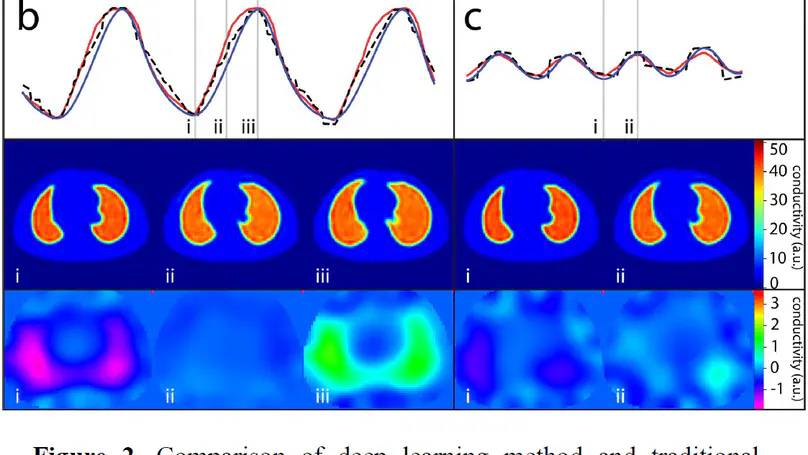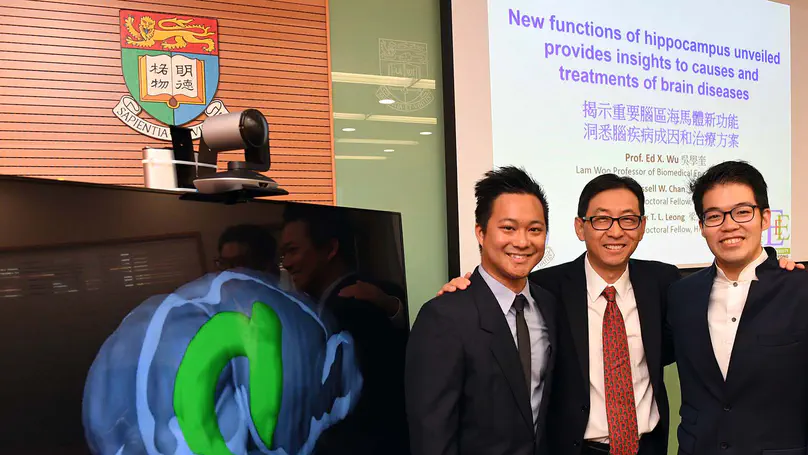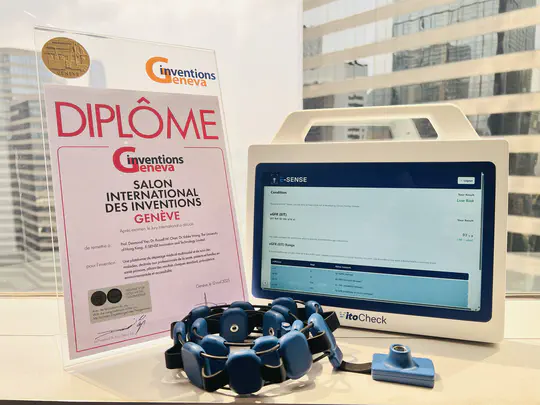Russell W Chan
Engineer, Scientist and Entrepreneur in Biomedical Imaging (HKU, Stanford, NYU)
E-SENSE Innovation & Technology
Biography
I am Dr. Russell Chan, co-founder and CEO of E-SENSE Innovation & Technology. I hold a B.Eng. in Biomedical Engineering and a Ph.D. in Electrical and Electronic Engineering from HKU, with postdoctoral experience at Stanford and NYU in neurology, neuroscience, and ophthalmology. Previously, I co-founded a Forbes Asia 100 to Watch startup and was named REVIVE CTO of the Year in 2023. Under my leadership, E-SENSE received Tech Impact Company of the Year at Tech Fest Hong Kong 2025 and a Gold Medal with Jury Congratulations at the 50th International Exhibition of Inventions of Geneva. My focus is advancing multi-modal biomedical imaging technologies to improve quality of life. I’m a Junior Fellow of ISMRM, Young Fellow of HKAE, and former R&D lead of the HKIE Biomedical Division.
- Biomedical Imaging (EIT, MRI, and Optoacustic)
- Brainwide networks, and Neurodegenerative Diseases
- Neuromodulation tools
B.Eng. in Biomedical Engineering, 2011
The University of Hong Kong
Ph.D. in Biomedical Imaging, 2016
The University of Hong Kong
Postdoc in Neurology and Neurological Sciences, 2020
Stanford University
Postdoc in Tech4Health, Neuroscience, Ophthalmology, 2021
New York University
Experience
Featured Publications

Recently, deep learning based methods have shown potential as alternative approaches for lung time difference electrical impedance tomography (tdEIT) reconstruction other than traditional regularized least square methods, that have inherent severe ill-posedness and low spatial resolution posing challenges for further interpretation. However, the validation of deep learning reconstruction quality is mainly focused on simulated data rather than in vivo human chest data, and on image quality rather than clinical indicator accuracy. In this study, a variational autoencoder is trained on high-resolution human chest simulations, and inference results on an EIT dataset collected from 22 healthy subjects performing various breathing paradigms are benchmarked with simultaneous spirometry measurements. The deep learning reconstructed global conductivity is significantly correlated with measured volume-time curves with correlation > 0.9. EIT lung function indicators from the reconstruction are also highly correlated with standard spirometry indicators with correlation > 0.75.Clinical Relevance— Our deep learning reconstruction method of lung tdEIT can predict lung volume and spirometry indicators while generating high-resolution EIT images, revealing potential of being a competitive approach in clinical settings.

The hippocampus with its dense reciprocal axonal projections to and from cortex is widely believed to mediate numerous cognitive functions. However, it is unknown whether and how specific hippocampal–cortical activity contributes to the brain-wide functional connectivity. Here, we use optogenetics and fMRI to examine how excitatory neural activity initiated in the dorsal dentate gyrus of the hippocampus propagates and modulates resting-state fMRI (rsfMRI) connectivity. We discover its robust propagation brain-wide at low frequency (1 Hz), which enhances interhemispheric rsfMRI connectivity and cortical and subcortical visual responses. Our findings highlight the important role of slow hippocampal–cortical oscillatory activity in driving brain-wide rsfMRI connectivity and mediating sensory processing.
Recent Publications
Projects

Contact
In case this doesn’t work, email me instead.
